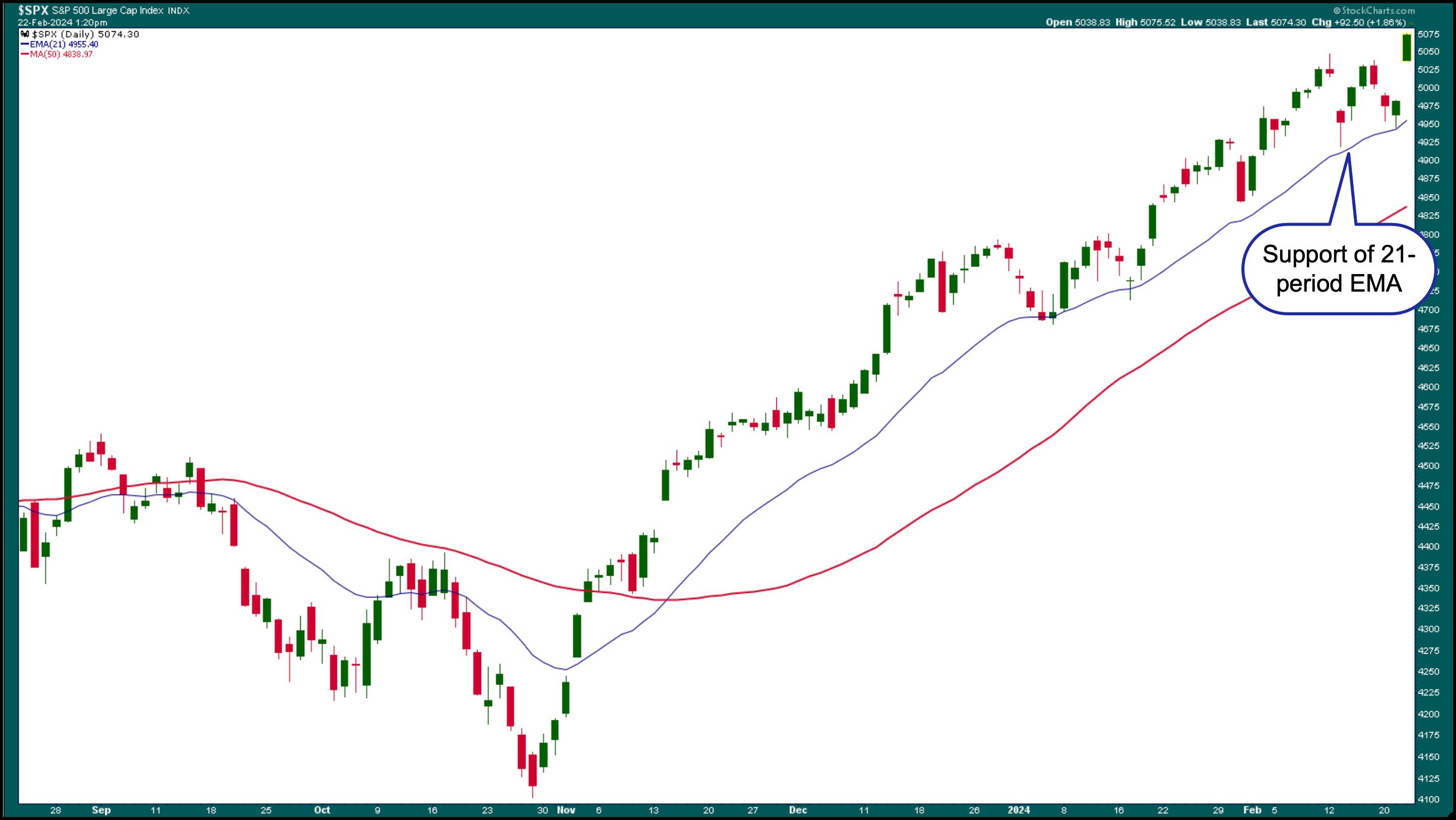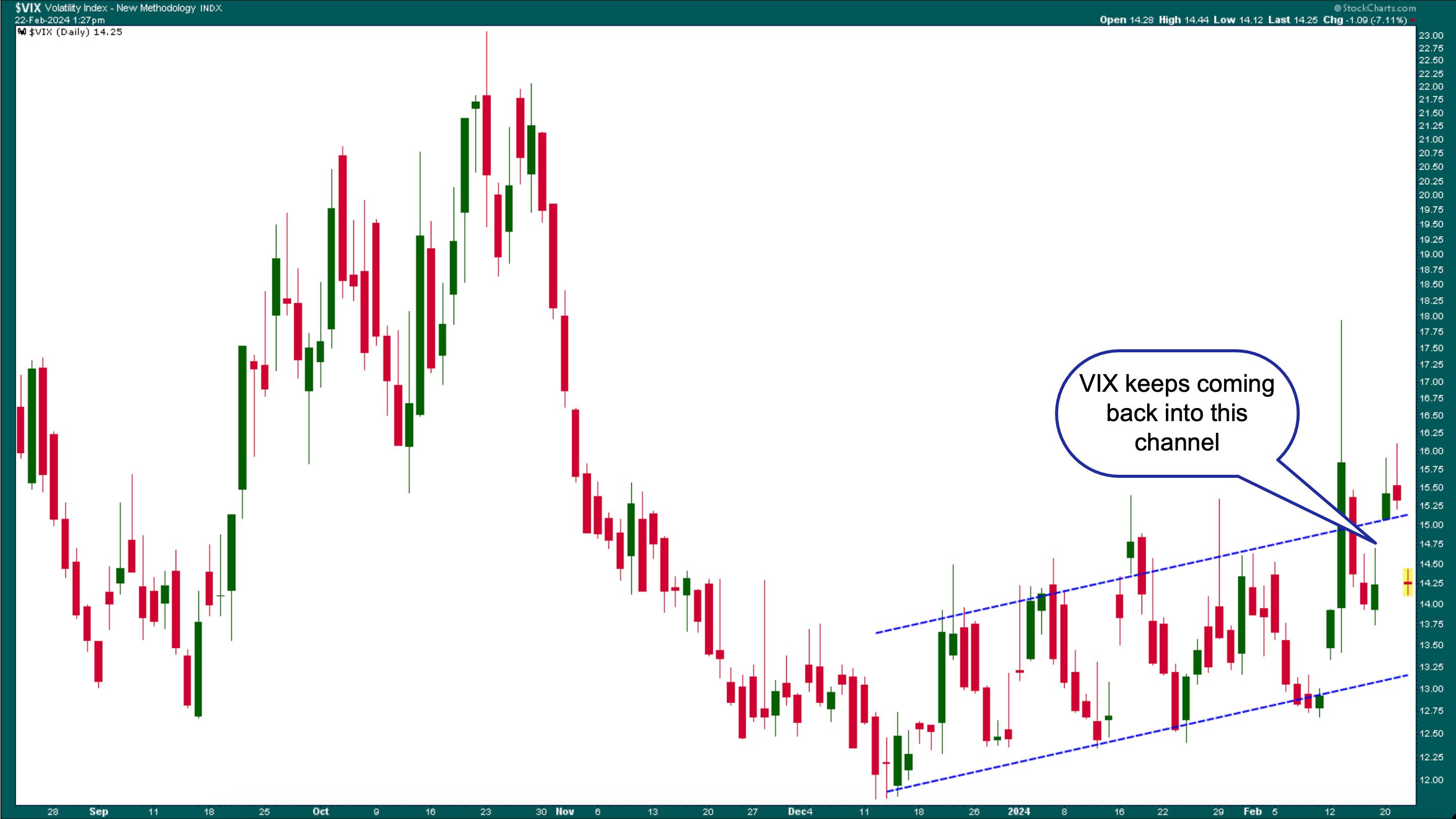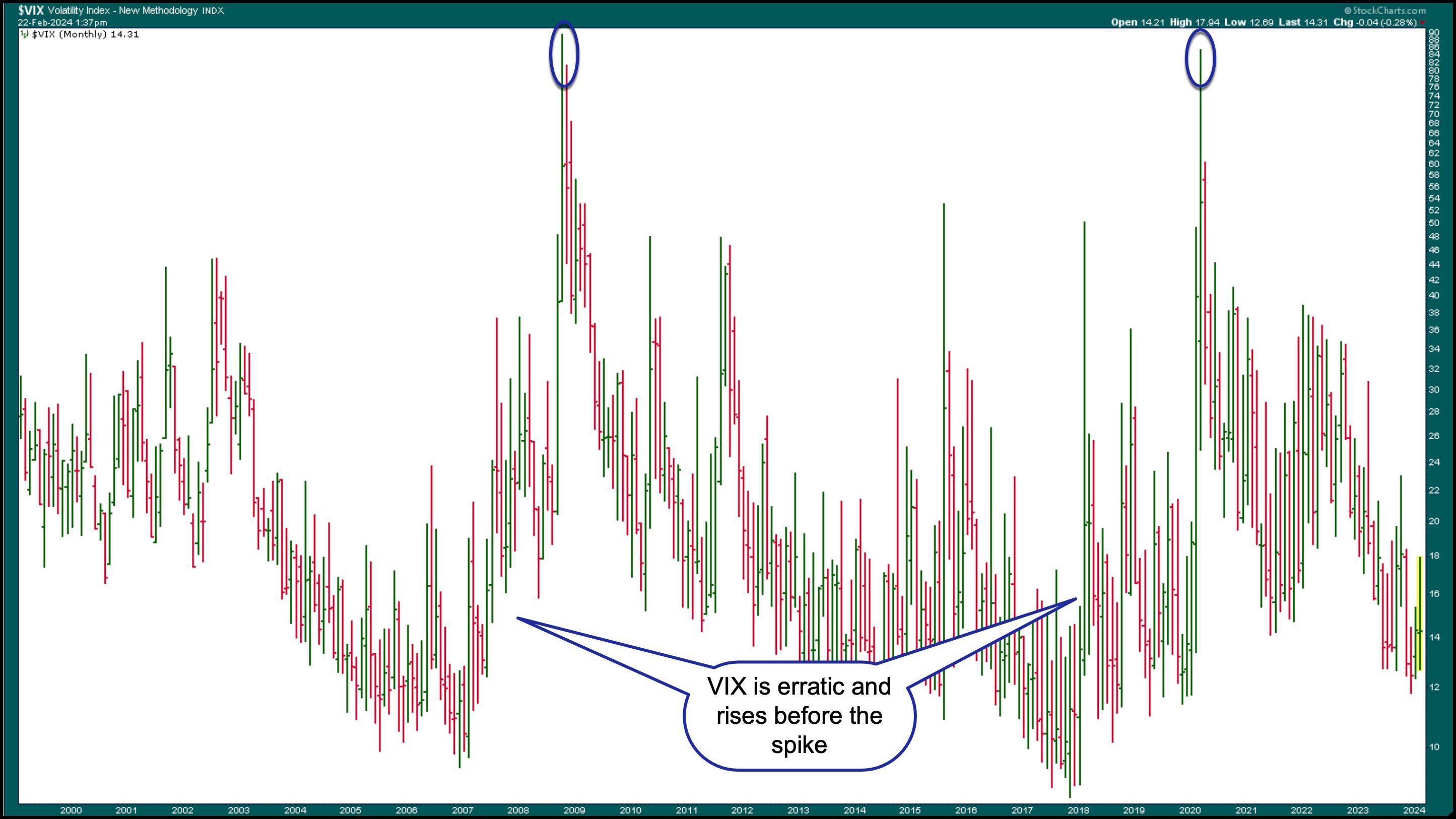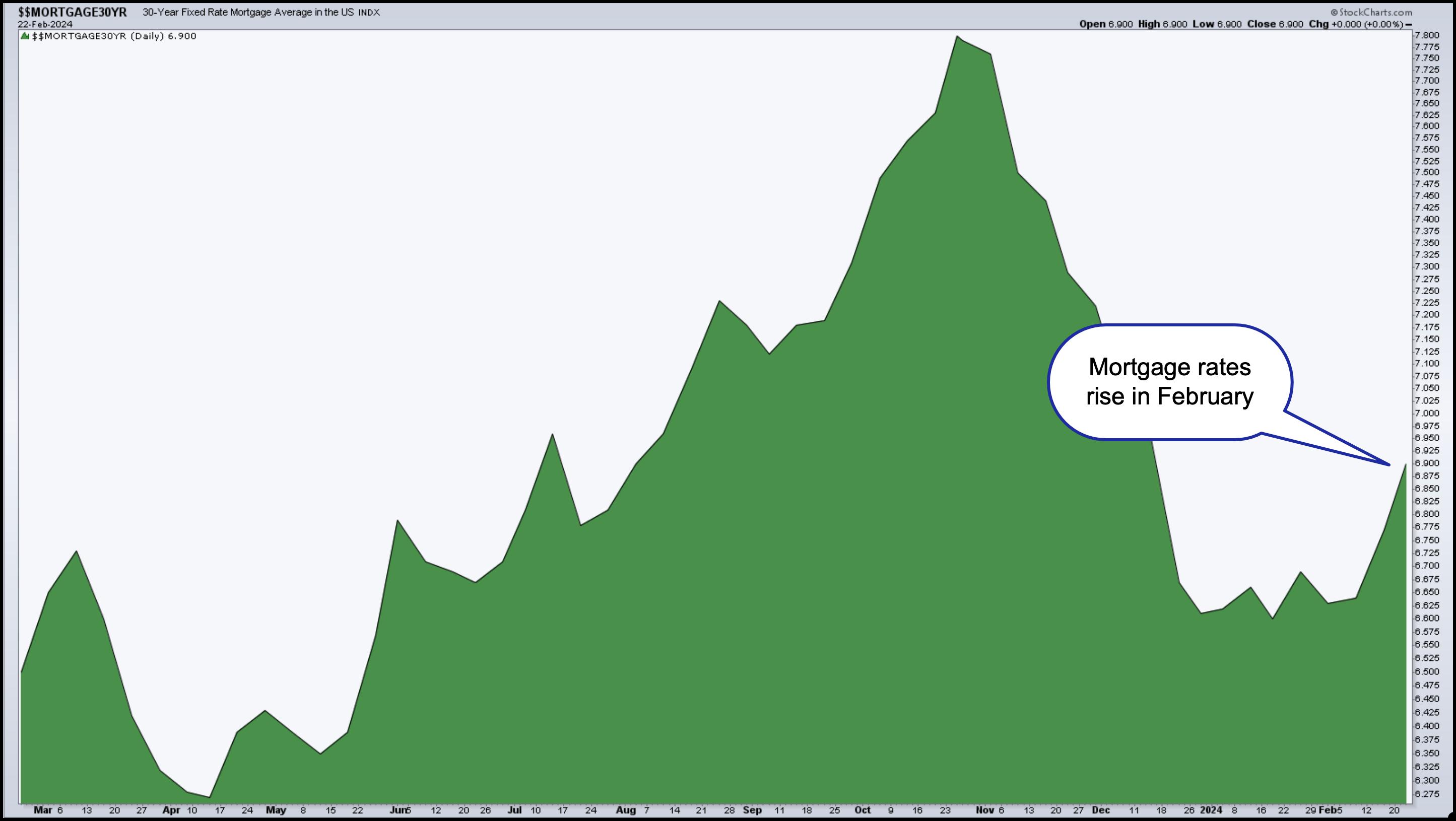KEY
TAKEAWAYS
- S&P 500 hits a new all-time high and could keep on going
- NVIDIA’s stellar earnings report was a catalyst to the rise in the S&P 500
- Volatility declined, indicating that investors are still relatively calm
Well, Nvidia did it! A stellar earnings report from NVDA brought back optimism in the stock market. When a stock rises around 15% (for NVDA, that’s about a $100 rise in its price), it’s an indication that investors still have tons of optimism. Equity futures were up ahead of the open on Thursday. The S&P 500 ($PX) gapped up, hitting a new all-time high. Looking at the daily chart of the S&P 500, the index has bounced off its 21-day exponential moving average (EMA) a few times since the beginning of its steep rally in November 2023.

CHART 1. DAILY CHART OF THE S&P 500 ($SPX) INDEX. From November 2023, the index has been holding on to the support of its 21-day exponential moving average as it keeps hitting new highs.Chart source: StockCharts.com. For educational purposes.
Consider the 21-day EMA as a first support level. If the EMA support holds, you can consider the market in a bull rally. NVDA’s strong guidance for the next two years shook off all investor worries. It almost seems that interest rate cuts are no longer front and center of investors’ minds. Even Thursday’s higher-than-estimated jobless claims number didn’t sway investor optimism. The worries will likely surface if the S&P 500 breaks below the 21-day EMA, at which time you’d have to look for that next support level, which could be the 50-day simple moving average.
The CBOE Volatility Index ($VIX) slowly rose and gapped lower on Thursday. The VIX has shown some exciting movement in the last few months, with wide-ranging days and lots of up-and-down movement.

CHART 2. DAILY CHART OF THE CBOE VOLATILITY INDEX ($VIX). The VIX has had some wide-ranging days, with many up-and-down movements that appear to be moving within an upward channel.Chart source: StockCharts.com. For educational purposes.
The slightly upward trending move in the VIX is not evident when you look at a longer-term chart of the VIX. When you view a monthly chart from 2000, before the most recent spikes—the Great Recession in 2008 and the COVID Crash in 2020—the VIX was much more volatile than it is now. Note that it rose before spiking >80. There are no similar signs of that right now, but watching the VIX regularly is always a good idea, as it can tell plenty about investor sentiment and send warning signs before a crash.

CHART 3. MONTHLY CHART OF VIX FROM 2000. Note the erratic movements in the VIX before the spikes; it also starts rising before the spike. These are two main reasons to keep an eye on the VIX.Chart source: StockCharts.com. For educational purposes.
In other news, existing home sales in January rose, another sign the economy is still healthy. One month’s data doesn’t make a trend and, given that mortgage rates have risen, there may be a decline in February’s number. Or maybe not. The chart below of the US 30-year Fixed Rate Mortgage shows a slight increase in mortgage rates in February.

CHART 4. 30-YEAR FIXED-RTE MORTGAGE AVERAGE IN THE US. After a sharp decline, mortgage rates rose in February. Will this rise have an impact on home sales?Chart source: StockCharts.com. For educational purposes.
The Bottom Line
Equities are the favorite among investors and will likely remain this way as long as AI continues to excite investors. And if NVDA continues to rise the way it has this year, the S&P 500 will ride along with it.

Disclaimer: This blog is for educational purposes only and should not be construed as financial advice. The ideas and strategies should never be used without first assessing your own personal and financial situation, or without consulting a financial professional.

Jayanthi Gopalakrishnan is Director of Site Content at StockCharts.com. She spends her time coming up with content strategies, delivering content to educate traders and investors, and finding ways to make technical analysis fun. Jayanthi was Managing Editor at T3 Custom, a content marketing agency for financial brands. Prior to that, she was Managing Editor of Technical Analysis of Stocks & Commodities magazine for 15+ years.
Learn More





